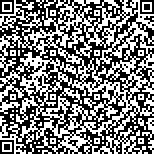| 引用本文: |
谢珠珠, 杨柯鸿, 冯文静, 邹攀, 钱荣康, 钱荣华.羟基积雪草酸对乳腺癌MCF-7细胞增殖、凋亡和自噬的影响[J].湖南中医药大学学报,2024,44(5):771-777[点击复制] |
|
| |
|
|
| 本文已被:浏览 1568次 下载 694次 |
| 羟基积雪草酸对乳腺癌MCF-7细胞增殖、凋亡和自噬的影响 |
| 谢珠珠,杨柯鸿,冯文静,邹攀,钱荣康,钱荣华 |
| (湖南中医药大学医学院, 血管生物学与转化医学湖南省高校重点实验室, 湖南 长沙 410208;广西壮族自治区南溪山医院, 广西 桂林 541002;钱荣康诊所, 湖南 娄底 417700) |
| 摘要: |
| 目的 探讨羟基积雪草酸(madecassic acid,MA)对乳腺癌MCF-7细胞增殖、凋亡及自噬的影响。方法 将MCF-7细胞分为阴性对照组、不同浓度的MA(80、100、120、140、160 μmol/L)组、不同浓度的他莫昔芬(10、20、30、40、50、35 μmol/L)组,干预24、36、48 h。初步确定MA发挥抗乳腺癌作用的最佳浓度和最佳时间后,采用MTT法检测细胞活力,计算相应的半抑制浓度(half maximal inhibitory concentration,IC50)值;流式细胞术检测细胞凋亡;JC-1荧光探针检测线粒体膜电位变化;Western blot法检测细胞增殖蛋白细胞核抗原蛋白(proliferating cell nuclear antigen,PCNA)、自噬蛋白苄氯素-1(Beclin-1)、微管相关蛋白1轻链3-Ⅱ/Ⅰ(microtubule-associated protein1 light chain 3Ⅱ/Ι,LC3Ⅱ/Ι)、螯合体1(protein 62,p62)的蛋白相对表达水平。透射电镜检测自噬小体。结果 发挥抗肿瘤作用的他莫昔芬最佳浓度为35 μmol/L,MA最佳浓度为140 μmol/L,最佳时间均为48 h。与阴性对照组相比,MA140 μmol/L组和他莫昔芬35 μmol/L组的细胞凋亡率,细胞荧光相对强度以及LC3Ⅱ/Ⅰ、Beclin-1蛋白相对表达水平均升高(P<0.05,P<0.01);PCNA、P62蛋白相对表达水平降低(P<0.05,P<0.01)。与MA 140 μmol/L组相比,他莫昔芬35 μmol/L组细胞凋亡率、细胞荧光相对强度以及Beclin-1蛋白相对表达水平明显升高(P<0.01),PCNA蛋白相对表达水平明显降低(P<0.01)。阴性对照组MCF-7细胞膜完整,核膜清晰,细胞形态良好;MA 140 μmol/L组细胞膜、细胞核形态不规则,线粒体基质密度较高、嵴扩张,可见自噬小体;他莫昔芬35 μmol/L组细胞膜局部溶解、破损,可见双核仁,线粒体肿胀、基质溶解,可见自噬小体。结论 MA可抑制乳腺癌MCF-7细胞的增殖、诱导细胞凋亡和自噬。 |
| 关键词: 乳腺癌 羟基积雪草酸 增殖 凋亡 自噬 MCF-7细胞 |
| DOI:10.3969/j.issn.1674-070X.2024.05.008 |
| 投稿时间:2023-11-17 |
| 基金项目:湖南省科技计划项目(2014FJ3085);湖南省教育厅基金项目(14C0858);湖南中医药大学重点项目(2021XJJJ001);广西壮族自治区中医药局自筹经费科研课题项目(GXZYC20230219)。 |
|
| Effects of madecassic acid on proliferation, apoptosis, and autophagy of breast cancer MCF-7 cells |
| XIE Zhuzhu, YANG Kehong, FENG Wenjing, ZOU Pan, QIAN Rongkang, QIAN Ronghua |
| (School of Medicine, Hunan University of Chinese Medicine, Key Laboratory of Vascular Biology and Translational Medicine of Hunan Province, Changsha, Hunan 410208, China;Nanxishan Hospital of Guangxi Zhuang Autonomous Region, Guilin, Guangxi 541002, China;Qian Rongkang Clinic, Loudi, Hunan 417700, China) |
| Abstract: |
| Objective To investigate the effects of madecassic acid (MA) on the proliferation, apoptosis, and autophagy of breast cancer MCF-7 cells. Methods MCF-7 cells were assigned into negative control group, MA (80, 100, 120, 140, 160 μmol/L) groups with different concentrations, and tamoxifen (10, 20, 30, 40, 50, 35 μmol/L) groups with different concentrations, and they were treated for 24, 36, and 48 h respectively. After the optimal concentration and time of MA anti-breast cancer effect were preliminarily determined, the cell viability was checked by MTT, and the corresponding half maximal inhibitory concentration (IC50) value was calculated. Flow cytometry was taken to detect apoptosis. JC-1 fluorescent probe was applied to check mitochondrial membrane potential changes. Western blot was used to determine the relative expression levels of proliferating cell nuclear antigen (PCNA), autophagy protein Beclin-1, microtubule-associated protein 1 light chain 3-Ⅱ/Ⅰ (LC3Ⅱ/Ⅰ), and chelate 1 (protein 62, p62). Transmission electron microscopy was used to detect autophagosomes. Results The optimal concentration of tamoxifen and MA were 35 μmol/L and 140 μmol/L respectively, and the optimal time was 48 h. Compared with the negative control group, the apoptosis rate, fluorescence relative intensity, and relative expression levels of LC3Ⅱ/Ⅰ and Beclin-1 protein in the MA 140 μmol/L group and tamoxifen 35 μmol/L group increased (P<0.05, P<0.01), and the relative expression levels of PCNA and p62 decreased (P<0.05, P<0.01). Compared with the MA 140 μmol/L group, the apoptosis rate, fluorescence relative intensity, and relative expression level of Beclin-1 protein in the tamoxifen 35 μmol/L group were significantly higher (P<0.01), and the relative expression level of PCNA protein was significantly lower (P<0.01). In the negative control group, the cell membrane of MCF-7 was intact, the nuclear membrane was clear, and the cell morphology was good; the cell membrane and nuclear morphology of the MA 140 μmol/L group were irregular, the mitochondrial matrix density was high, the ridge was expanded, and autophagosomes were visible; and the cell membrane of the tamoxifen 35 μmol/L group was partially dissolved and damaged, mitochondrial were swelling, matrix lysis was seen, and the double nucleoli and autophagosomes were visible. Conclusion MA can inhibit the proliferation of breast cancer MCF-7 cells and induce cell apoptosis and autophagy. |
| Key words: breast cancer madecassic acid proliferation apoptosis autophagy MCF-7 cells |
|

二维码(扫一下试试看!) |
|
|
|
|




